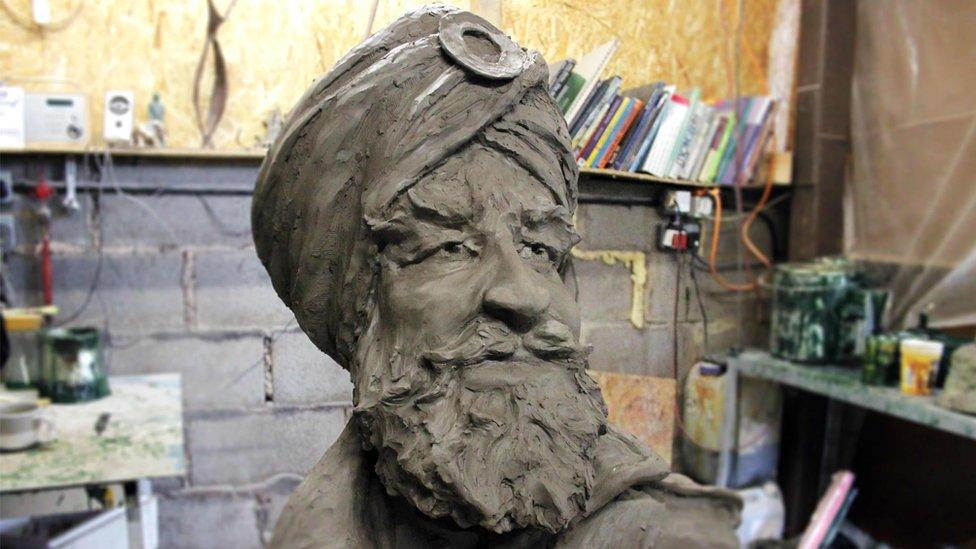World War One: The story of one of the last men to die
- Published
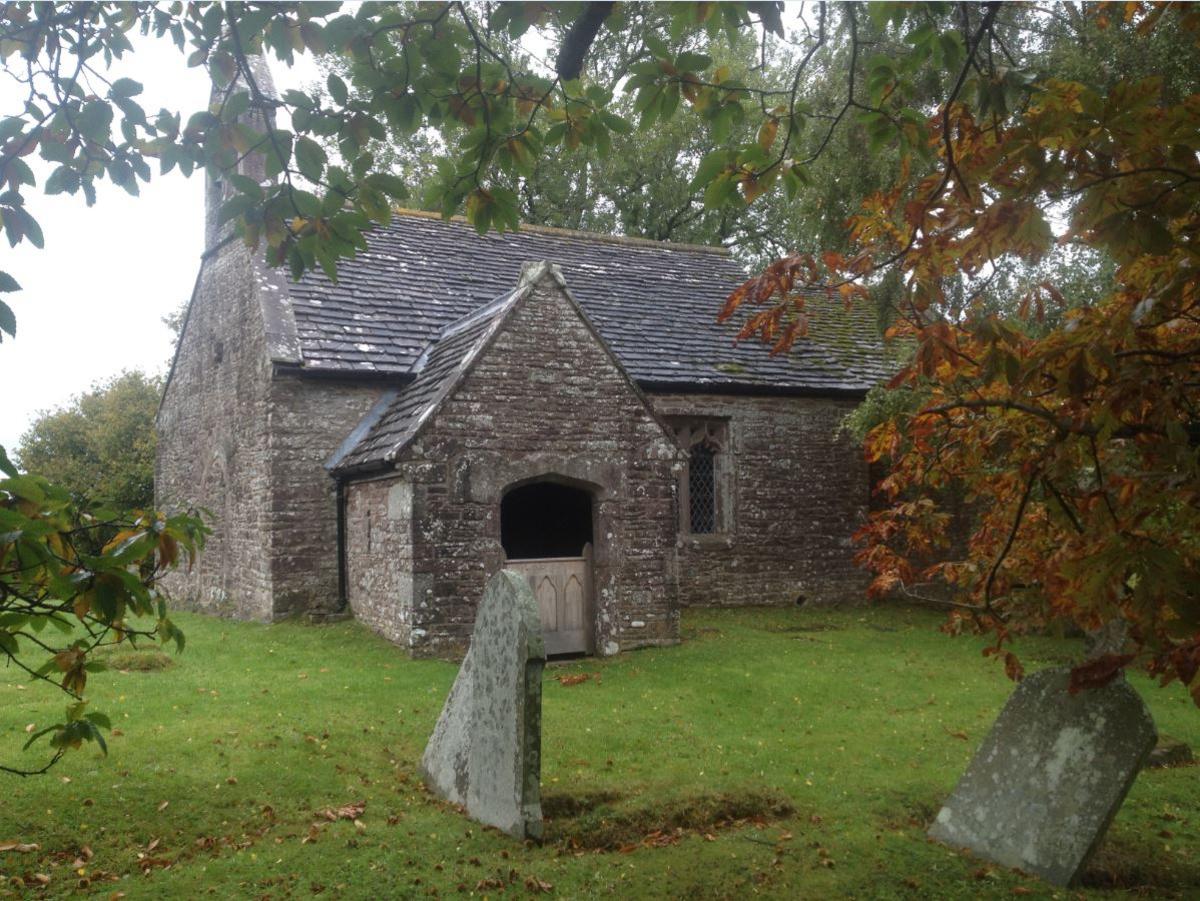
The Church of the Holy Cross in Kilgwrrwg, where Able Seaman Richard Morgan is buried
As bells ring out this week to honour those who died in World War One, in Monmouthshire, south Wales, one man's story will likely be remembered more than most.
Able Seaman Richard Morgan, 26, was one of the very last men to die in the war - drowning on Armistice Day off the coast of Plymouth.
His death, like that of so many others, would have devastated his family and small community where he grew up.

The Armistice 100 years on

Long read: The forgotten female soldier on the forgotten frontline
Video: War footage brought alive in colour
Interactive:, external What would you have done between 1914 and 1918?
Living history: Why 'indecent' Armistice Day parties ended

Yet it would have been particularly bittersweet falling, as it did, on the ultimate day of war.
Because of the timing of his death - with some accounts misleadingly recording him as the last serviceman to die in the war - a relatively large amount is known about his life 100 years on.
Born on 7 July 1892, Able Seaman Morgan grew up Kilgwrrwg, a tiny village five miles west of Chepstow.
Living with his father Albert, mother Mary Ann and three sisters, Mable, Frances and Hilda, he most likely attended the local Devauden school, as well as Church of the Holy Cross, a 6th Century church in Kilgwrrwg, where he is buried.
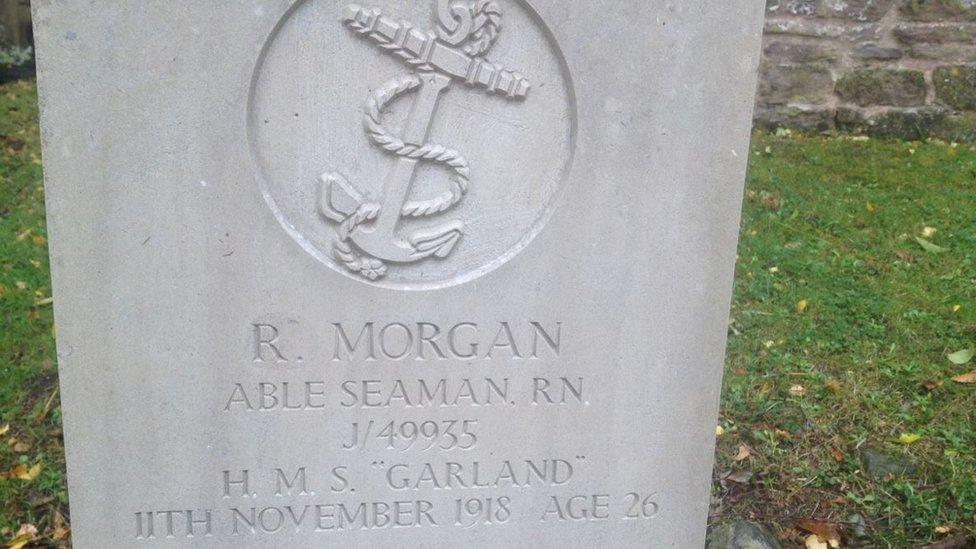
The war grave of Able Seaman Richard Morgan, who died age 26
Kilgwrrwg was and remains a remote rural area, where food would have been provided by strip farming, rotating crops such as wheat and corn.
After leaving school, Able Seaman Morgan followed in his father's footsteps and worked as a woodcutter.
At the beginning of the 20th Century, the area around Chepstow was relatively forested, although much of its oak had already been harvested for the Royal Navy during the Victorian era.
Ships of 3,000 tons or even greater were produced on the tidal River Wye in Chepstow, with the town's population booming as a result.
But Able Seaman Morgan's life as a woodcutter was interrupted in 14 February 1916 when, age 23, he enlisted to help the war effort.
Due to the luck of the draw, he did not end up on the front line, but in the Royal Navy Volunteer Reserves.
Created in 1903, the unit enabled recruits to train part-time on drill ships dotted around the British coast, learning skills such as gunnery and telegraphy (ship to shore communications).
On joining up, Able Seaman Morgan was initially given the rank of Ordinary Seaman, being promoted to Able Seaman in June 1918.
Although no photo of him seems to now exist, his service record describes him as five feet, eight and a quarter inches tall, with brown hair, brown eyes and a dark complexion.
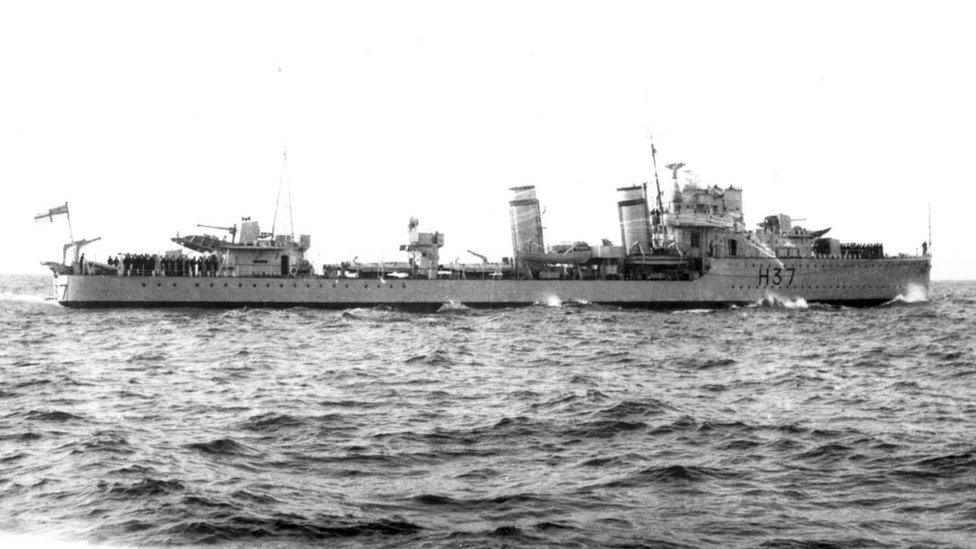
The Royal Navy named two vessels HMS Garland in both world wars. The date of this photo is unknown
At the time of his death, he was serving with destroyer HMS Garland, docked at Plymouth Command in Devonport.
He was travelling on a smaller boat perhaps to or from shore, and drowned after it capsized.
A committee of inquiry found that his death was an accident and that "no blame was attributable to any of the officers of the ship".
Amateur historian Dr Naylor Firth, of Itton, Monmouthshire, said: "We do not know the time of day he died.
"Perhaps he was the last Welshman to die, or the last navy reservist.
"All we truly know is that he died on the same day that millions were celebrating peace and the hope that this brought."
Although various sources claim him to be the last British serviceman to die in WW1, in reality many more died after him as a result of wounds or illness.
Gethin Matthews, a historian at Swansea University, said: "It is often claimed that Able Seaman Morgan was the last serviceman to die in the war.
"But records from the Commonwealth War Graves Commission show that, in fact, there were 861 British and empire servicemen who died on Armistice Day.
"The time and date of 11GMT on 11 November 1918 is also arbitrary as many men died in Russia, where the fighting was to continue for several more months."
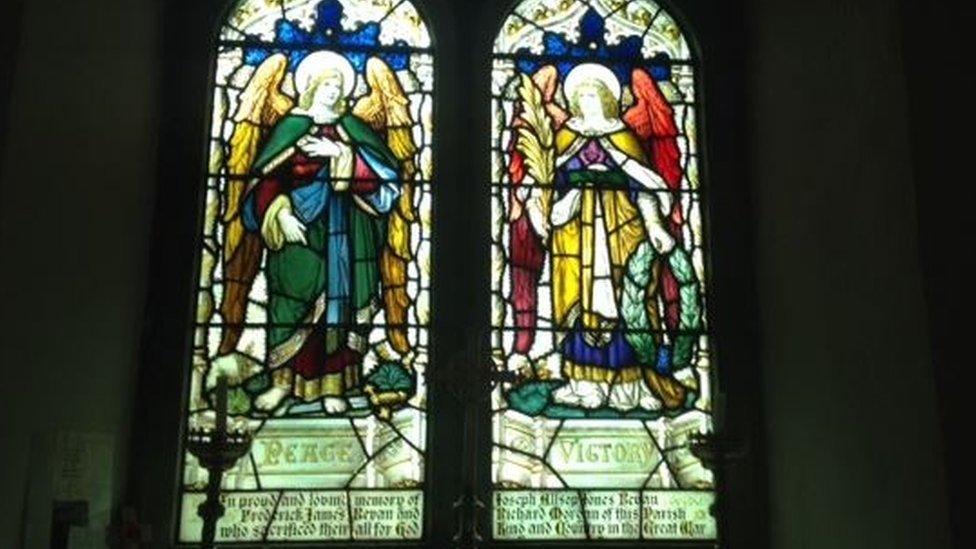
The stained glass window which honours Able Seaman Richard Morgan and his friends who also died
Either way, it seems Able Seaman Morgan's death affected his community deeply, so much so his name was inscribed into the stained-glass window of his local church, alongside those of two brothers who also died, Joseph and Frederick Bevan.
The Bevans and Morgans were neighbours, and probably knew each other well.
Yet only Able Seaman Morgan has his grave back home in the Church of the Holy Cross.
A remote and scenic church, it is only accessible by walking across fields and the surrounding countryside bares virtually no sign of modern life.
Inscribed in the east-facing stained-glass window is the phrase, "In proud and loving memory of Joseph Allson Jones Bevan, Frederick James Bevan and Richard Morgan of this parish who sacrificed their all for God, King and country in the Great War."
Michael Gollop, rector of the Church of the Holy Cross, said: "You can't help thinking of this horrible event.
"This is a very remote and peaceful community - a world away from the horrors of war - and who knows what effect his death would have had on his wider family.
"It is a small human tragedy, but it has so many echoes of the wider, terrible story."
- Published5 November 2018
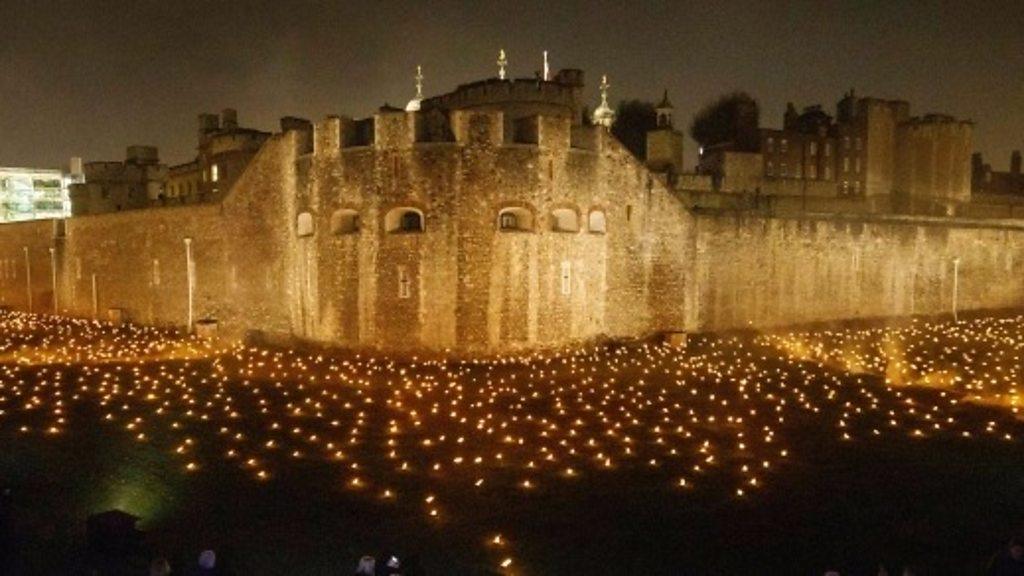
- Published4 November 2018

- Published4 November 2018
